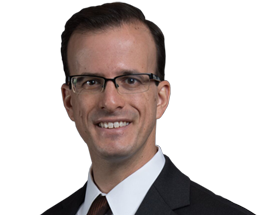
Marc Berman is a politician and attorney, currently serving as a member of the California State Assembly. He is a Democrat representing the 24th Assembly District, encompassing parts of the San Francisco Peninsula and Silicon Valley. Before being elected to the Assembly, he was a member of the Palo Alto City Council.
Silicon Valley is the heart of global innovation and has contributed mightily to progress made thus far in reducing California’s greenhouse emissions. The state on track to achieving the economy-wide carbon target for 2020 established in AB 32 (California’s Global Warming Solutions Act, 2006). California’s leadership has also provided much needed momentum to international efforts to manage greenhouse gas emissions.
The state is a shining example of the decoupling of economic growth and environmental progress. Declining emissions and enviable growth rates, including job growth at twice the national average, disprove the notion that these two must be in opposition. California’s clean energy sector already supports 500,000 jobs, and the state is supporting the emergence of the clean energy giants of the 21st century.
The state’s policy approaches and its clean technologies are being adopted around the globe, providing new hope that we can leave our children with a safe climate. Yet even more innovation is needed to get to the near zero levels required by mid-century. For Silicon Valley, this is a classic opportunity to do well by doing good.
Marc has been a leader on the Palo Alto City Council to make the city one of the greenest in the country, including:
With no sign to the end of gridlock in Washington, California’s vision, energy, and can-do attitude is needed anew. Now is the time to finish putting in place California climate policy version 2.0. Innovation requires long term market certainty to flourish, which is why policymakers have focused in recent years on putting together a package of 2030 policies. Last year, California’s SB 350 solidified a 50 percent renewable electricity standard for utilities. The adoption in 2016 of SB 32 and AB 197 are important new milestones, but much work remains to be done. Marc is eager to push forward the practical solutions needed in four key areas:
Revamp Zero Emission Vehicle (ZEV) efforts to put the state on track to achieve existing ambitious targets (1.5 million in 2025). NRDC recently assessed the state’s plan and finds the state’s current trajectory puts it on track to be about 500,00 vehicles short of its 2025 goal. The state needs to re-evaluate and optimize the package of consumer incentives, the zero emission vehicle regulation meant to incent manufacturers to bring more ZEVs to market, and the policies being put in place to ensure broad benefits, such as low income ZEV car sharing programs that have been successful in their pilot phase.
Upgrade electricity policy to better support system optimization. The modern grid must balance supply and demand, and utility regulation has to support this. Performance based regulatory reform can help. Californians invested millions on smart meters and there are opportunities for better use of the data these provide, such as smarter, more targeted energy efficiency efforts.
Solidify early progress toward smart growth in policy to help build more walkable communities, mixed use development and 21st century mobility solutions. Increasingly this is a point of importance in attracting top talent. Nothing is more important to innovation than human capital. San Francisco has exceeded Silicon Valley in recent years in attracting venture capital in part because of its walkable, transit-oriented neighborhoods.
Ensure the clean economy works for everyone. While the majority of social equity concerns will be best addressed through education, job training, and an effective social safety net, measures to ensure lower income residents are not negatively impacted are the right thing to do. California has already been a leader with SB 535 and myriad new efforts, from community solar to low income EV car sharing in Los Angeles supported with a $1.6 million grant from the state’s Greenhouse Gas Reduction fund. Still more can be done.